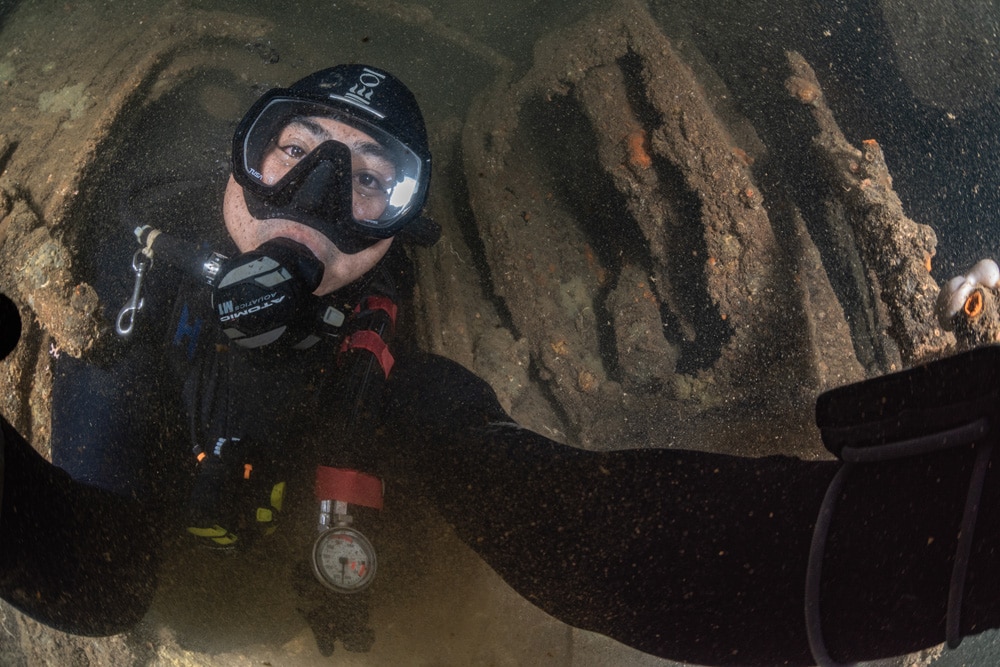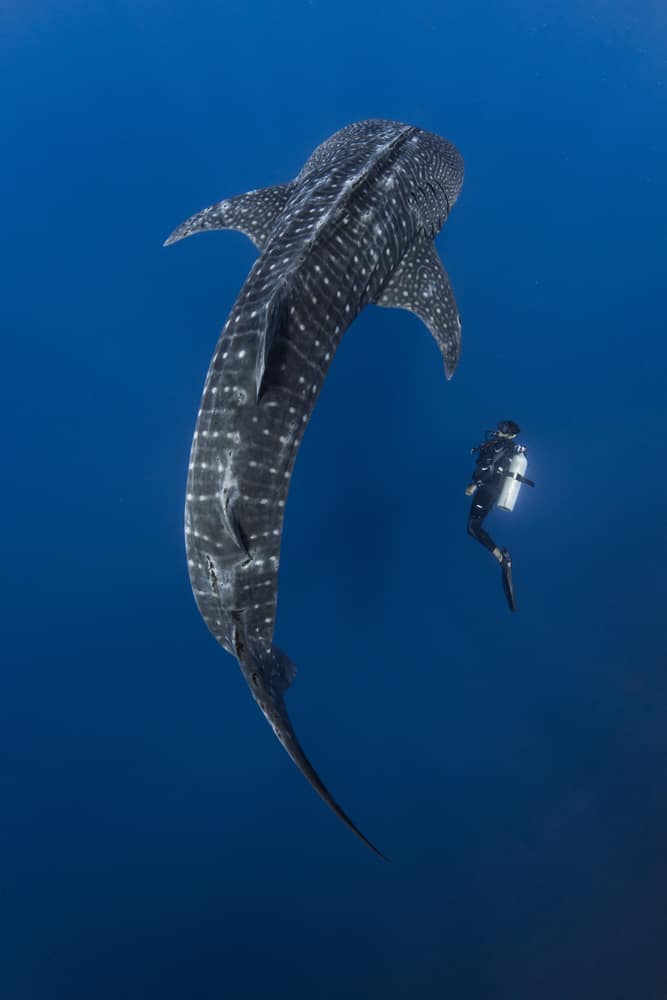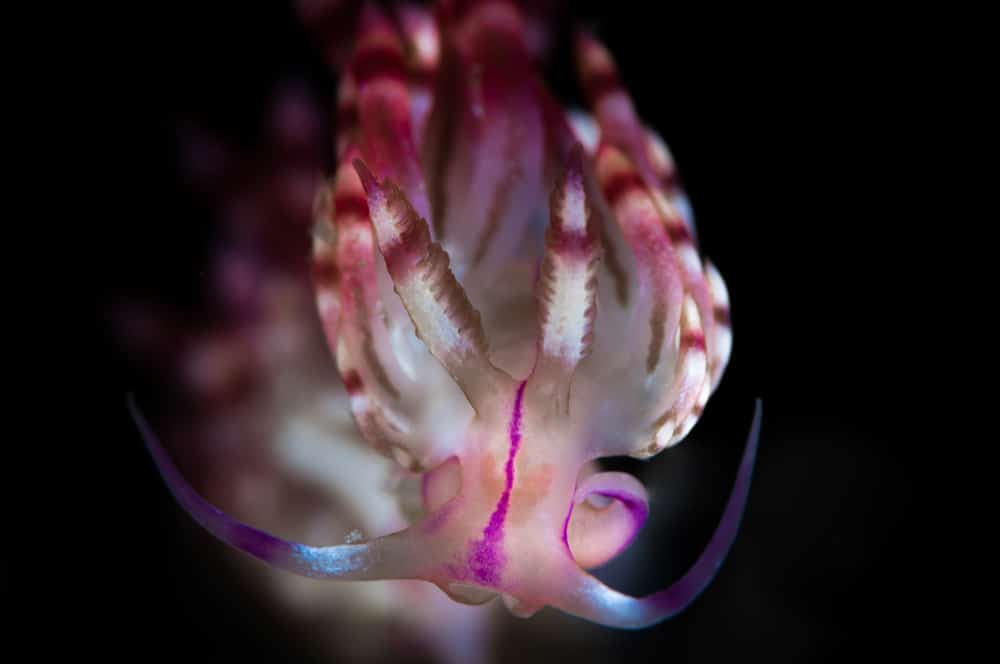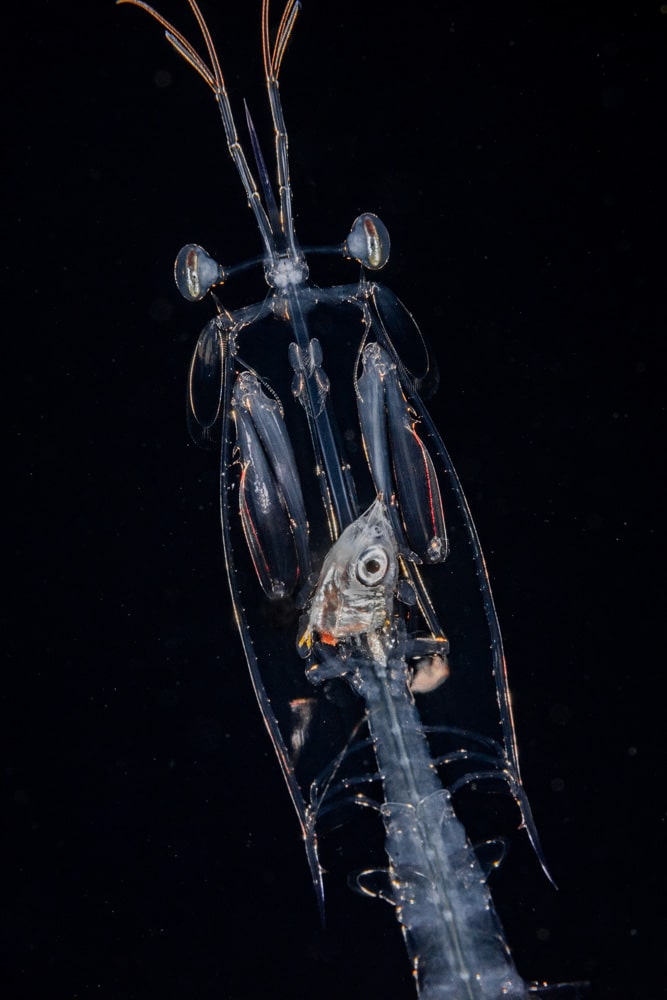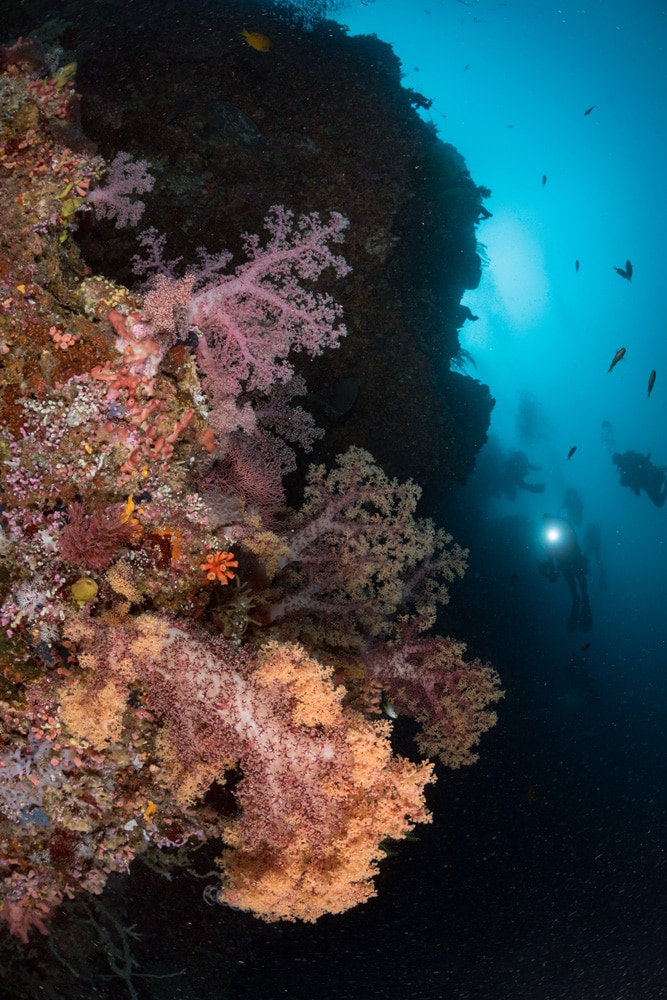News
Scubaverse Underwater Photographer Interview: Ram Yoro

In this ongoing series, Scubaverse’s Underwater Photography Editor Nick Robertson-Brown talks to underwater photographers from around the world that he admires. In this blog: Ram Yoro
Ram lives in archipelagic Philippines where frequent excursions to nearby reefs in his early years triggered a life-long passion for exploring the oceans. His deep curiosity and love for the underwater world eventually made him leave a young corporate career to become a full-time scuba instructor and underwater photographer. For more than a decade since, Ram has actively conducted scuba lessons and underwater photography workshops in his base in Anilao.
As an underwater photographer, he is a pioneer and proponent of the Bonfire Diving method for documenting plankton in coastal waters. His appetite for exploration also led him into the realm of technical diving, and to specialize in underwater cave and wreck photography as member of the Filipino Cave Divers organization.
Aside from winning multiple awards over the years in the Anilao Shootout, a prestigious international live underwater photo competition, Ram also co-authored two books – the “Guide to Anilao” and “Legends Beneath the Waves: Philippines”. Moreover, he is also a major contributor to the following recent publications – “Black is the New Blue Volume II”, “Philippine Caves”, and “Philippine Coral Reefs”. When not in exploration mode, Ram spends his time with his little mermaids Yana and Mara, and wife Geraldine who is also a scuba diver.
NRB: How did your underwater photography start?
RY: I consider myself blessed to have witnessed and enjoyed the beauty of the reefs at a young age and always had this craving to share it with others. I thought the best way to do this is by taking photos underwater so I invested in a compact underwater setup as soon as I could afford one. Initially it was just to satisfy my impulse to share what I love to others, and later on it evolved into artistic pursuit. To this day, and many camera systems later on, the ocean still never fails to amaze me and I always find it full of awe-inspiring stories to tell. It is humbling to know that as an underwater photographer, I get to be an ambassador of the oceans – I get to sit in front of its daily spectacle and tell others about it.
NRB: What is your favourite u/w camera equipment (past & present) & why?
RY: I started underwater photography in the dawn of the digital age when camera system options were limited and less affordable. I initially had to make do with what I could just afford and went through a trial and error process with early Canon S- and G-series compact systems over the years. As anyone who has tried them would attest however, the main frustration with compact cameras is their slow auto-focus speed especially in low-light environments like underwater. In this department however, back then, I was pleasantly surprised at how the Canon G16 performed – it became my go-to camera for some time, enabling me to capture many fleeting and split-second macro moments which are not uncommon in the reefs. Nowadays, technology has improved and many compact camera options enviably have auto-focus speeds that satisfy the demands of the dim and ever-dynamic marine environment.
I had no plans, or no means rather, to upgrade to a DSLR system until my supportive wife surprised me with a Nikon D810 as a birthday present. The D810 was a beast – on top of a bigger sensor that delivers top image quality and superb low-light performance, it had excellent auto-focus performance and a deep dynamic range that allowed me to capture unique macro moments and emphasize depth in wide angle shots. With the various lens options available to DSLR systems also, I was encouraged to push my D810 into the exciting worlds of blackwater and bonfire diving, as well as underwater cave and wreck photography. Though it may not be top-of-line anymore today, I still treasure and hold dear my old and trusty Nikon D810 for the many adventures we’ve been through.
NRB: What would be your advice to anyone new to underwater photography?
RY: After all these years and having gone through several underwater camera systems, I realize I keep coming back to my underwater photography basics. I would thus share with them the same advice I would give my younger self in hindsight, as cliché as it may sound – build good fundamentals, then constantly practice and dare to evolve.
Your fundamentals – understanding of the exposure triangle and lighting principles, among other things – will enable you to work with any camera system or in any environment. It will make you less reliant on equipment but rather go with your knowledge and skills more, which is very liberating nowadays given how fast equipment upgrades come by.
Constant practice on the other hand is key to skill mastery. Practice makes perfect as they say, and skill-heavy underwater photography is no exception – no shortcuts here, but don’t worry this is the fun part! Mastery is only gained when muscle memory and instincts are developed through repetition over time.
And finally, dare to evolve – try new things and keep yourself up to date with the latest methods, styles and tricks. This will push your creativity and keep you engaged in underwater photography, and I believe is the secret to your longevity in the craft. Moreover, it will also expand and keep your portfolio always fresh and relevant to the times.
NRB: What, or who, has been your single biggest inspiration for your underwater photography?
RY: Like many in my generation of local underwater photographers in the Philippines, I have always had great admiration for the many works of Palme D’or awardee Scott “Gutsy” Tuason. It is ironic that while we Filipinos are blessed with countless of vibrant reefs, many of us take it for granted because most of us – in the past at least – have not seen nor enjoyed the fullness of its diverse beauty.
Gutsy was a pioneer in the Philippines in the sense that he was the first to visually document and share the many unseen treasures in our seas. The effect of his stunning images on me and many in my generation was profound, and it made me realize that photography can be a great tool for spreading awareness about our oceans and inspiring people to care for it. His works did not only encourage me to get into underwater photography, but also gave my craft a sense of purpose. Without Gutsy’s influence, I probably would not be as engaged in underwater photography as I am today, and the endeavour certainly would not have been as meaningful.
NRB: What image are you most proud of and why?
RY: It’s challenging to pick a photo given that the objectivity of a photographer is often clouded by the efforts invested in getting the shot. There is however a recent photo, taken in June 2019, that I couldn’t be more pleased with. It’s a photo of a wreck in the Brunei high seas, the Petani Mistral, which was later presented to Sultan Hassanal Bolkiah Himself! It’s a rare and great honor for any photographer’s work to be appreciated by His Majesty, and my gratitude to Poni Divers for making it possible. The image was to be part of a book project with Poni Divers about the amazing wrecks of Brunei – originally set to be released late 2020, but postponed to a future date when the ongoing pandemic eases.
NRB: Where is your favourite dive location, and is it for the photography?
RY: Because of its diversity, you can never have too much of Anilao and for that reason I decided to make it my diving base about a decade ago. For underwater photography, it is widely popular for macro but if you look beyond you will find that it actually has the complete package. It also has abundant wide angle opportunities, superb bonfire and blackwater diving, and even an underwater cave system as well as a small but entertaining wreck to enjoy. Logistically, its geographically sheltered location makes Anilao diveable all year round, and being only 3 hours away from Metro Manila makes it conveniently accessible. For non-photographers of any level, it is just as enjoyable with a variety of marine life covered reefs to choose from – walls, drop offs, slopes, submerged mounds, and small atolls perfect for long lazy dives. A favorite of many divers, including myself, once you’ve been to Anilao it’s hard to lose that itch to keep coming back.
NRB: What are you views on marine life manipulation, moving subjects?
RY: Marine life manipulation is a sad aspect of underwater photography and it has to stop. In many cases it is a reflection of skewed priorities, where the photograph comes above anything else. We forget that the underwater world is a unique place with its own dynamics, and our mindless intervention to setup the perfect shot may make a subject vulnerable to premature predation or cause it direct physical harm. This unchecked mind-set has become rampant, even systemic in some areas already, but it is never too late to change our ways.
Like many anthropogenic issues, stubborn ignorance is partly to blame and therefore education is the remedy. We need to take responsibility, create awareness and educate ourselves to effect a positive culture change. As an industry, we need to remind ourselves of the obvious, that the underwater world is a delicate living ecosystem and we – as capable beings and its beneficiaries – have the duty to care for it as stewards. We need to institutionally spread this mind-set through scuba courses, photo workshops, and dive briefings. And on a personal level, we can push for this in social media posts, in casual chit chats, and in our own little ways. This collective effort may take a while but will hopefully plant the seeds for a lasting and omnipresent culture of caring and stewardship for the oceans in our small but growing industry.
NRB: What do you look for when you are making your images?
RY: We always hope to encounter crazy behaviour, amazing portraits, or magnificent scenes, but in fact most of the time we are presented with the common and the ordinary. I have learned to temper expectations and make the most of what is given, and realized it is just as fulfilling to make the ordinary look extraordinary through photography. As every photo is a story, I try to find the hidden narrative or make one, and then proceed to make the framing, settings, and lighting artistically emphasize it.
NRB: What motivates you to take u/w photos?
RY: In as much as I enjoy the process of underwater photography itself, I find it very fulfilling to bring stunning images of the ocean closer to people. I think it is probably innate in all of us to want to share and preserve what is beautiful, and I’m very lucky to be able to use my underwater photography for the same purpose for the oceans. I am even more driven nowadays, as the oceans that we enjoy and depend on are threatened by a host of anthropogenic and other harmful factors. It is amazing how visual art can create awareness and inspire people to act.
NRB: If you could photograph any one thing/place what or where would that be?
RY: I have always been fascinated by the deep sea angler fish. A distant relative of the frogfish, they exist in very deep and dark waters, armed with sharp teeth and a bio-luminescent lure. Their appearance invokes a mixture of awe, fear, and science-fiction. It’s mind-boggling that such creatures even exist. But they do, and they remind us that there is so much life yet to been seen in the oceans and, as we’ve been told, we have only scratched the surface to date.
It is unlikely that an adult deep sea angler fish may be seen within the diving depths but larval and juvenile versions have been reportedly caught in plankton nets in the shallow depth ranges. I think an encounter with a young deep sea angler fish vertically migrating to the shallows at night to feed on plankton is just a matter of time. I am hoping I’d be at the right time and place during a bonfire or blackwater dive in plankton rich Balayan Bay in Anilao one of these days.
To see more of Ram’s work visit his Instagram page.
To read Ram’s features in Philippines Dive Adventures click here.
Gear News
Introducing the TR-80, IR-50 and CS-30 Regulators from DYNAMICNORD

Whether you are a beginner or a professional diver – with the three new main regulators from DYNAMICNORD, everyone will find their favourite regulator. They all look super stylish.
Excellent performance with the TR-80
Quality and performance are the be-all and end-all for regulators. It is not for nothing that the TR stands for Tec Reg. The innovative design of the TR-80 guarantees absolute reliability – even in ice-cold waters.

Perfect breathing effort at 0.8 J/l / certified for diving in waters below 10 degrees / structural design made of solid brass for best cold protection / membrane-compensated design with dry seal of the first stage / reduced exhalation effort thanks to optimized exhalation membrane and bubble deflector / adjustable Venturi (dive/predive) and adjustment knob for individual inhalation comfort / innovative design of the front cover prevents free-flow in strong currents or when diving with scooters / design made of sandblasted brass, matt chrome finish / 2 HP and 4 LP outlets / mouthpiece made of high-quality, anti-allergic silicone for maximum comfort.


Amazing underwater adventures with the IR-50
The IR-50 is the top regulator for advanced and experienced divers. Natural breathing is the essence of this regulator.

Ideal breathing effort at 0.8 J/l /certified for diving in waters below 10 degrees / compensated membrane / adjustable venturi (dive/predive) and adjustment knob for individual inhalation comfort/ outlet valve and deflector for minimum exhalation effort and reduction of bubbles on the face / design made of sandblasted brass, matt chrome finish / 2 HP and 4 NP outlets / mouthpiece made of high-quality, anti-allergic silicone for maximum comfort.


The Workhorse – our CS-30
For diving centres and diving beginners – the workhorse stands for strong construction, reliability and robustness. Perfect for your training.

Optimal breathing effort at 0.8 J/l /recommended for diving in waters above 10 degrees / non-compensated piston / adjustable venturi (dive/predive) / outlet valve and deflector for minimum exhalation effort and reduction of bubbles on the face / design made of sandblasted brass, matt chrome finish / 1 HP and 3 NP outlets / mouthpiece made of high-quality, anti-allergic silicone for maximum comfort.


Octopus OP-30
The OP-30 is the ideal addition to all DYNAMICNORD regulators. It is identical in construction to the CS-30.

The TR-80, IR-50, CS-30 (DIN & INT) regulators and the Octopus OP-30 are available from DYNAMICNORD dealers and in the online store.
DYNAMICNORD – Your Outdoor Companion.
Marine Life & Conservation
Paul Watson Released as Denmark Blocks Japan’s Extradition Bid

Renowned anti-whaling activist Paul Watson has been released from custody in Greenland after spending five months in detention. Denmark’s Justice Ministry rejected Japan’s request for his extradition, citing insufficient guarantees that his time already served in custody would be credited against any potential sentence.
The 74-year-old Canadian-American was arrested on July 21 in Nuuk, Greenland’s capital, when his ship docked to refuel. His arrest was based on a 2012 Japanese warrant related to a 2010 encounter in Antarctic waters. Japan alleged Watson obstructed operations and caused damage to a whaling research ship during efforts to disrupt illegal whaling. Watson has consistently denied these claims, maintaining his commitment to marine conservation.
Denmark, which oversees extradition matters for Greenland, concluded that while the legal conditions for extradition were met, the lack of assurances from Japan regarding time-served credit made extradition untenable.
In a video shared by his foundation, Watson expressed gratitude and relief, saying, “After five months, it’s good to be out… and good to know they’re not sending me to Japan.” He added that the most difficult part of his time in custody was being separated from his two young sons.
Watson is a pioneering figure in marine conservation, known for founding the Captain Paul Watson Foundation in 2022 after decades of activism with the Sea Shepherd Conservation Society. His bold efforts to defend marine life have earned him widespread support, including from celebrities and conservationists. His work has also been featured in the acclaimed reality TV series Whale Wars.
Watson’s lawyer, Jonas Christoffersen, praised the decision, stating, “We are happy and relieved that Paul Watson is now free.” He added that Watson is eager to reunite with his family and continue his vital work.
The arrest occurred while Watson’s vessel, the M/Y John Paul DeJoria, was en route to the North Pacific with a team of 26 volunteers to intercept a Japanese whaling ship. His foundation described the arrest as politically motivated and emphasized that Watson’s actions were focused on ending illegal whaling practices.
Japan resumed commercial whaling in 2019 after leaving the International Whaling Commission, asserting that whale meat is a cultural tradition. Conservationists, however, continue to challenge these practices, highlighting their impact on marine ecosystems.
Despite the challenges, Watson remains steadfast in his mission to protect marine life and bring attention to whaling practices. His dedication to ocean conservation has made him a globally respected advocate for the environment.
-

 News2 months ago
News2 months agoIconic SS United States to become the World’s Largest Artificial Reef
-

 News3 months ago
News3 months agoBook Review – 52 Assignments: Underwater Photography
-

 Gear News3 months ago
Gear News3 months agoDYNAMICNORD – New German diving brand enters the British market
-

 News3 months ago
News3 months agoExploring Cenote El Pit: A Diver’s Dream
-

 Gear News3 months ago
Gear News3 months agoTry BARE drysuits (and maybe even win one!) this Friday with Sea & Sea at North West Dive Fest
-

 Marine Life & Conservation3 months ago
Marine Life & Conservation3 months agoBook Review: Coral Triangle Cameos
-

 Blogs2 months ago
Blogs2 months agoDive the Egyptian Red Sea this Autumn with Regaldive
-

 News3 months ago
News3 months ago2024 Ocean Art Underwater Photo Competition Announced


